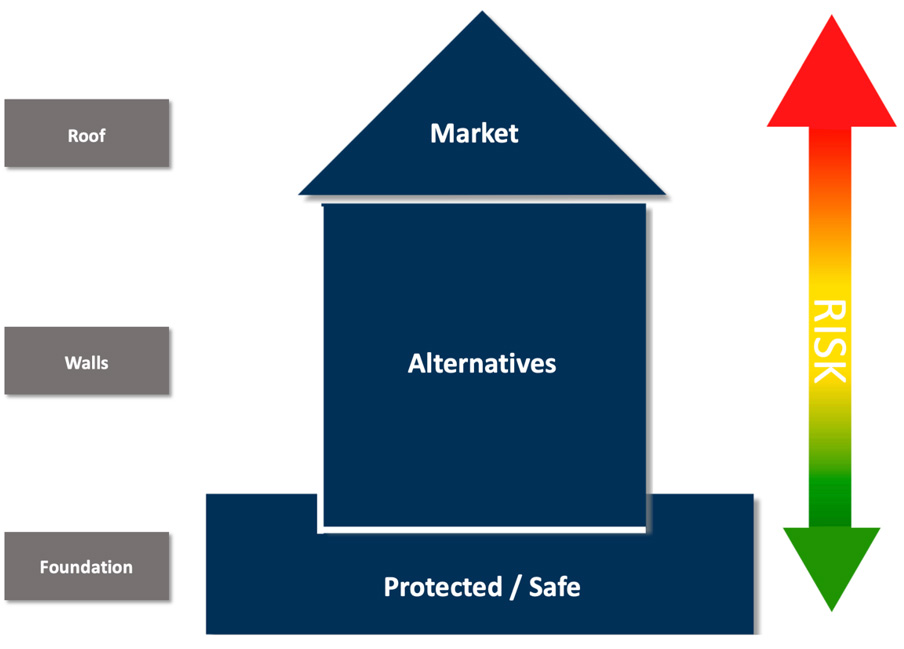Avoid These 4 Common but COSTLY Retirement Income Mistakes
There are no pay stubs in retirement and no accounting departments to answer your questions. Once you retire, you need to be prepared to generate income and use it to pay your bills in a money-savvy manner.


As you near retirement, it becomes clear the responsibility for most aspects of your financial life will fall squarely on your own shoulders. The paychecks you earned will now be replaced by the paychecks you create. For most, those paychecks will need to last for years and cover various expenses throughout our retirement.
Unfortunately, the mistakes you make with your retirement income can have devastating consequences for even the best laid plans.
Consider these four common mistakes to avoid:

Sign up for Kiplinger’s Free E-Newsletters
Profit and prosper with the best of expert advice on investing, taxes, retirement, personal finance and more - straight to your e-mail.
Profit and prosper with the best of expert advice - straight to your e-mail.
Mistake #1: Not Having a Budget Specific to Retirement
This may seem obvious, however, it’s probably much more common than you realize. When teaching retirement courses, I ask our students how many have formalized budgets as their guide to track monthly expenses. I’m always shocked by how few actually have anything more than a budget “in their head.”
Many of those who do have something in place did not make the appropriate adjustments for retirement. Using old assumptions like “you will only need 80%” of your pre-retirement income can be dangerous, especially if you plan to be more active in those early years. Take time to understand what your fixed monthly expenses will be once you retire, along with your anticipated discretionary spending for things like travel, leisure or just spoiling the grandkids.
Without a clear budget, how will you (or your financial adviser) be able to make some of the most important retirement decisions you face, such as when to begin taking Social Security benefits, choosing the right pension elections or determining what mix of investments, insurance or banking products are appropriate for you? The answer is you CAN’T.
Mistake #2: Not Having a Written Income Plan
A written income plan is a MUST. Similar to a budget, most people never have an actual income plan during their working years because their paycheck was their income plan. Earning money and accumulating wealth is often the primary focus throughout our careers. In retirement, the responsibility now falls on you to create your own monthly paycheck from your basket of resources, including Social Security benefits, pensions, CDs, investments, annuities, etc.
A well-designed written plan should bring clarity as to when, how much and from which sources income is needed to cover fixed expenses and discretionary spending. It should also identify what percentage of your fixed monthly expenses will be covered by fixed sources of income, such as Social Security and pension, sometimes referred to as your Income Security Score. The goal should be to get this score as close to 100% as possible to avoid your monthly income being dependent on market performance.
Just like a retirement budget, a written income plan will help you make better decisions about the timing of taking retirement benefits and best combination of investments and insurance products to fill in any gaps or shortfalls.
Mistake #3: Co-Mingling Your Money
The idea of separating your money based on its purpose works in concert with creating a written income plan (see above). As your written plan begins to take form, you should be able to identify gaps, such as the amount of your monthly expenses that are not covered by fixed sources of income, such as Social Security and pensions. Combined with your other retirement needs and desires, you can now begin to allocate your resources appropriately based on purpose.
The visual of a house can demonstrate this concept:

In this example, there are three areas with different purposes, typical to many retirees.
- The foundation represents safety and would include things such as your Social Security benefits, pensions, CDs and annuities. It’s from this segment you should create your monthly income.
- The walls of the house could be dedicated to things such as health care and inflation and could include using tools like alternative investments, real estate or life insurance.
- The roof represents the growth piece of retirement and may be dedicated to market-based investments, such as stocks, mutual funds or ETFs.
REALIZE that how much is allocated to each section is completely different for everyone. For example, retirees whose benefits include multiple sources of fixed income may dedicate more of their money to risk-based solutions, compared with someone whose only source of guaranteed income may be from monthly Social Security. A lack of guaranteed* monthly income may require more to be allocated to different tools such as CDs or annuities. There is never a one-size-fits-all solution.
Mistake #4: Taking Regular Distributions from Fluctuating Accounts
This is probably the most dangerous thing a retiree can do when creating monthly income, because they are now at the mercy of the returns in the market and something called sequence of returns risk. This is all about the order in which the market returns hit your portfolio once you retire. It’s random and unpredictable and can have devasting consequences if left to chance, as this example** shows.

These two portfolios are exactly the same except the order of actual market returns was reversed in the second example. It’s here that you can see the importance of separating your money by purpose to avoid relying on recurring distributions from something so random. This is certainly one of the biggest risks many retirees will face during their retirement but often one of the areas most often left to chance.
Avoid these common mistakes to enjoy all that your retirement can offer!
Disclaimer
*Annuity guarantees are backed by the financial strength and claims paying ability of the issuing insurance company. Financial products and services if recommended may include investment advisory fees, commissions and/or other charges.
Disclaimer
**This sample portfolio illustration is hypothetical only. It is not intended to represent any particular investment or performance. The above spreadsheet is for illustrative purposes only and does not represent any specific investment recommendation. Investing involves risk and loss of principal. Past performance is no guarantee of future results.
Disclaimer
Investment Advisory Services offered through Trek Financial, LLC, (Trek) an SEC Registered Investment Adviser. Information presented is for educational purposes only. It should not be considered specific investment advice, does not take into consideration your specific situation, and does not intend to make an offer or solicitation for the sale or purchase of any securities or investment strategies. Investments involve risk and are not guaranteed, and past performance is no guarantee of future results. For specific tax advice on any strategy, consult with a qualified tax professional before implementing any strategy discussed herein. Trek 21-115.
Get Kiplinger Today newsletter — free
Profit and prosper with the best of Kiplinger's advice on investing, taxes, retirement, personal finance and much more. Delivered daily. Enter your email in the box and click Sign Me Up.

Nicholas Toman, CFP®, is a lead retirement planner and investment adviser with Empowered Financial Management, a firm that specializes in retirement planning for those individuals within five to seven years of retirement or who have recently retired and no longer wish to serve as their own financial adviser. Nicholas is a graduate of the University of Wisconsin-Whitewater with a BBA in accounting and has been a Certified Financial Planner since 2014.
-
 Stock Market Today: Stocks Soar on China Trade Talk Hopes
Stock Market Today: Stocks Soar on China Trade Talk HopesTreasury Secretary Bessent said current U.S.-China trade relations are unsustainable and signaled hopes for negotiations.
By Karee Venema
-
 2026 Disney Dining Plan Returns: Free Dining for Kids & Resort Benefits
2026 Disney Dining Plan Returns: Free Dining for Kids & Resort BenefitsPlan your 2026 Walt Disney World vacation now. Learn about the returning Disney Dining Plan, how kids aged three to nine eat free, and the exclusive benefits of staying at a Disney Resort hotel.
By Carla Ayers
-
 SRI Redefined: Going Beyond Socially Responsible Investing
SRI Redefined: Going Beyond Socially Responsible InvestingNow that climate change has progressed to a changed climate, sustainable investing needs to evolve to address new demands of resilience and innovation.
By Peter Krull, CSRIC®
-
 Here's When a Lack of Credit Card Debt Can Cause You Problems
Here's When a Lack of Credit Card Debt Can Cause You ProblemsUsually, getting a new credit card can be difficult if you have too much card debt, but this bank customer ran into an issue because he had no debt at all.
By H. Dennis Beaver, Esq.
-
 Going to College? How to Navigate the Financial Planning
Going to College? How to Navigate the Financial PlanningCollege decisions this year seem even more complex than usual, including determining whether a school is a 'financial fit.' Here's how to find your way.
By Chris Ebeling
-
 Financial Steps After a Loved One's Alzheimer's Diagnosis
Financial Steps After a Loved One's Alzheimer's DiagnosisIt's important to move fast on legal safeguards, estate planning and more while your loved one still has the capacity to make decisions.
By Thomas C. West, CLU®, ChFC®, AIF®
-
 How Soon Can You Walk Away After Selling Your Business?
How Soon Can You Walk Away After Selling Your Business?You may earn more money from the sale of your business if you stay to help with the transition to new management. The question is, do you need to?
By Evan T. Beach, CFP®, AWMA®
-
 Two Don'ts and Four Dos During Trump's Trade War
Two Don'ts and Four Dos During Trump's Trade WarThe financial rules have changed now that tariffs have disrupted the markets and created economic uncertainty. What can you do? (And what shouldn't you do?)
By Maggie Kulyk, CRPC®, CSRIC™
-
 I'm Single, With No Kids: Why Do I Need an Estate Plan?
I'm Single, With No Kids: Why Do I Need an Estate Plan?Unless you have a plan in place, guess who might be making all the decisions about your prized possessions, or even your health care: a court.
By Cynthia Pruemm, Investment Adviser Representative
-
 Most Investors Aren't as Diversified as They Think: Are You?
Most Investors Aren't as Diversified as They Think: Are You?You could be facing a surprisingly dangerous amount of concentration risk without realizing it. Fixing that problem starts with knowing exactly what you own.
By Scott Noble, CPA/PFS